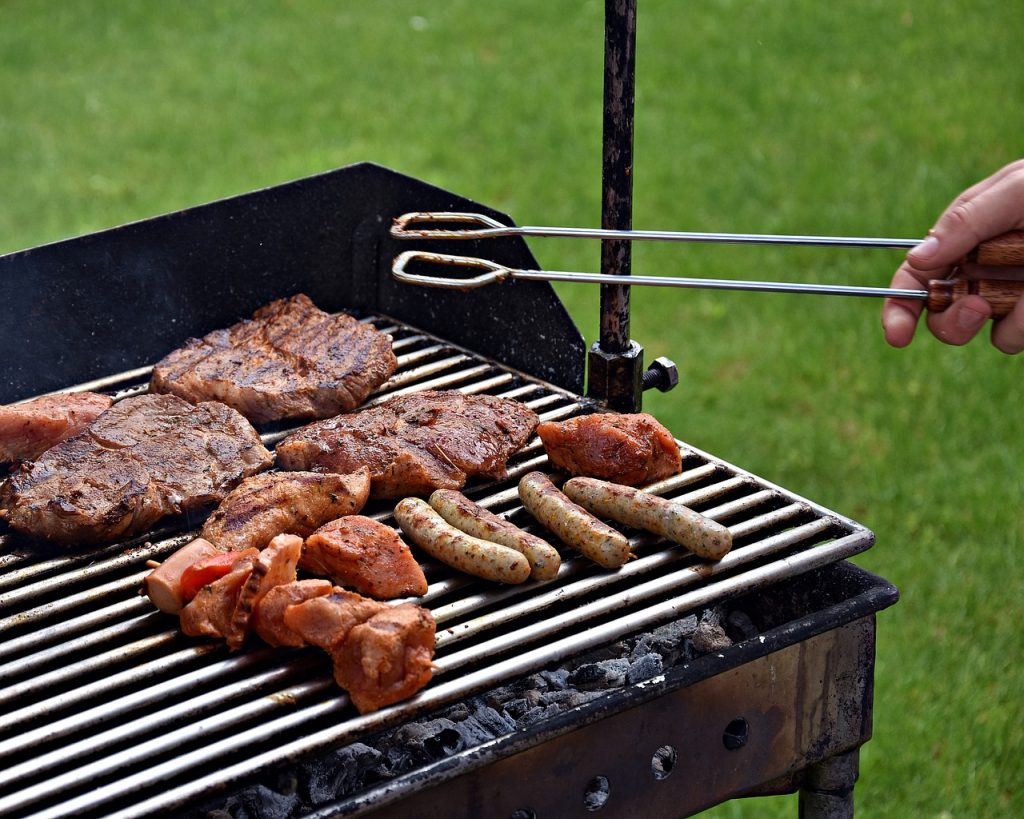All fields are required
Posted in Food Safety,Our Blog on July 3, 2024

Fourth of July marks our nation’s independence from England. However, what emerged from a disagreement about tea and taxes (among other things) is fireworks, family gatherings, and of course backyard grilling.
Fireworks can be a beautiful experience. However, you want to keep the excitement in the air, and not bubbling around in your gut.
Keep these food safety tips in mind as you break out the grill and the “Kiss the Cook” apron. Whether you are grilling, smoking, or barbecuing, a few simple steps can keep the experience memorable – and not in a bad way.
On this quintessential grilling holiday, the United States Department of Agriculture (USDA) and the Make Food Safe family urge everyone taking part in food preparation during this time (and every time), to keep food safety precautions in mind when preparing, cooking, and serving food.
“Fourth of July is a great time to use the grill and smoker to cook delicious meats and poultry,” says Under Secretary for Food Safety Dr. Emilio Esteban. “Whichever method you use, reduce your food risk of foodborne illness by using a food thermometer to measure the safe minimum internal temperature, and reduce cross-contamination by using separate utensils for raw and cooked meat and poultry.”
Always thaw meat or poultry before you begin cooking.
Starting from frozen, food will cook unevenly. This allows some parts of the food to be cooked while other parts hang out too long in the danger zone – a temperature between 40° F and 140 °F where bacteria can reproduce to dangerous numbers and become infectious.
Smoking methods generally cook food at lower temperatures over a longer period of time. Frozen food takes significantly longer to reach a safe internal temperature, so it is not advisable to smoke frozen food.
When grilling, however frozen foods can be cooked a bit faster as the heat is significantly higher than when smoking. However, the likelihood of uneven cooking throughout the food still makes it a discouraged method.
Marinating meat and poultry prior to grilling or smoking is a great way to infuse flavors, tenderize the meat, and up your barbeque game.
Never marinate meat on the counter. Keep food in the refrigerator while those flavors are melding to amplify flavor while reducing bacterial growth.
Basting meat with marinade while cooking helps keep meat moist and layers on that flavor. It may be easier to keep the marinade handy by the grill, however the safer option is to store it covered in the refrigerator between applications.
Never consume marinade that has come in contact with raw meat or poultry without boiling it first. If you’d like to use some of the marinade as a sauce, set aside a portion of the marinade for that purpose.
Raw meat and poultry should be handled separately from fully cooked or ready-to-eat foods. Use different cutting boards, utensils, and reusable supplies for these items. Store raw foods separately from cooked foods to reduce the risk of cross-contamination.
Keep the smoker or grill at safe cooking temperatures. When cooking with a smoker or grill, the USDA suggests using two different thermometers.
The first is a food thermometer. Instant reading is best! This thermometer is used to check the internal temperature of a food. When inserted in the thickest part of the meat, you can determine if a food is fully cooked to a safe enough temperature to kill potential foodborne germs.
The other is an oven-safe thermometer. This thermometer is used to measure the air temperature inside the smoker or grill. Aim for a temperature of 225 to 300° F throughout the cooking process.
The cooking process isn’t done when the juices run clear, or the meat looks just right in color. The only way to tell if a food is cooked enough to eat safely is with a food thermometer.
But different foods require different safe internal temperatures.
All raw beef, pork, lamb and veal steaks, chops and roasts must be cooked to a minimum internal temperature of 145° F before removing from the heat source. Insert a food thermometer into the thickest portion of the meat for a safe reading.
Allow meat to rest for at least three minutes before carving or eating.
Raw ground meat products, such as beef, pork, lamb and veal must be cooked to a higher internal temperature. The grinding process introduces additional risk for foodborne germs inside the meat. A temperature of 160° F measured by a food thermometer inserted in the thickest part of the meat is necessary to kill potential bacteria present in the food.
Poultry must be cooked to an even higher temperature, as there is typically greater contamination risk associated with these products. Chicken, turkey, and other poultry products should be cooked to a minimum internal temperature of 165° F. This should be measured by inserting a food thermometer into the center of thickest portion of the meat. It is a good idea to measure more than one part of the bird. For example, a measurement of the breast, thigh, and thickest part of the leg is best.
The Make Food Safe family wishes you a safe and happy Fourth of July!
If you’d like to know more about food safety topics in the news, like “Fourth of July Food Safety Tips to Keep the Fireworks in the Air and Not in the Bathroom!,” check out the Make Food Safe Blog. We regularly update trending topics, foodborne infections in the news, recalls, and more! Stay tuned for quality information to help keep your family safe, while The Lange Law Firm, PLLC strives to Make Food Safe!
By: Heather Van Tassell (contributing writer, non-lawyer)